 Who: Tony Schnur is an actor and producer based in Wilmington, North Carolina. After moving to the state in the mid-’90s, he began a voice-acting career that currently includes an array of online animated series produced by Hank & Jed Movie Pictures. Doraleous & Associates centers on a group of heroes-for-hire roaming the fantasy land of Nudonia, with Schnur voicing group members Sir Walken, Broof, and assorted characters they encounter on their adventures. Battlefield Friends features the voices of Schnur (as Sniper) and his fellow Hank & Jed regulars as a squad fighting across a landscape inspired by the video game Battlefield. He also voices multiple characters in Hank & Jed‘s first animated film, the Old West-inspired Toonstone. Camera In The Sun talked to Schnur for a November 2014 interview about the production process behind Doraleous, Battlefield Friends, and its in-game spin-off, Battleloggers.
Who: Tony Schnur is an actor and producer based in Wilmington, North Carolina. After moving to the state in the mid-’90s, he began a voice-acting career that currently includes an array of online animated series produced by Hank & Jed Movie Pictures. Doraleous & Associates centers on a group of heroes-for-hire roaming the fantasy land of Nudonia, with Schnur voicing group members Sir Walken, Broof, and assorted characters they encounter on their adventures. Battlefield Friends features the voices of Schnur (as Sniper) and his fellow Hank & Jed regulars as a squad fighting across a landscape inspired by the video game Battlefield. He also voices multiple characters in Hank & Jed‘s first animated film, the Old West-inspired Toonstone. Camera In The Sun talked to Schnur for a November 2014 interview about the production process behind Doraleous, Battlefield Friends, and its in-game spin-off, Battleloggers.
What is the history of your involvement in Doraleous?
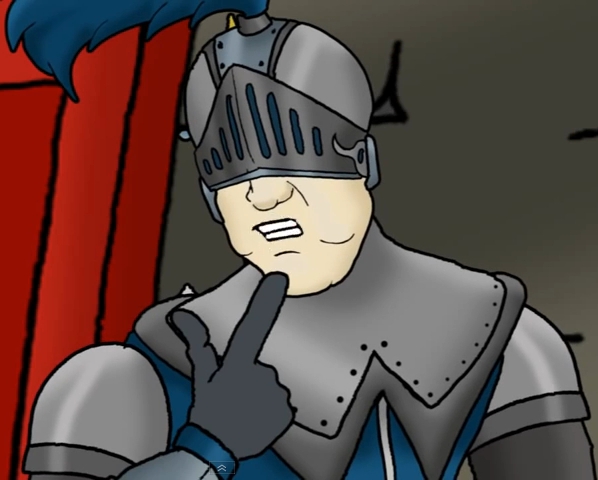 Going back to when I was a kid, I played Dungeons & Dragons, lots of roleplaying games, and video games like Phantasy Star, Final Fantasy, Ultima — all those really old ones that I still enjoy. I also watched a lot of TV. I grew up watching Saturday Night Live. So when I would see somebody do an impression, I would try to mimic that. I think the first time I saw a really good Christopher Walken impression, it was Jay Mohr. And I just had to do it, because I was so blown away by how funny it was. Impressions really lent to me developing as a voice actor. I know the rest of the guys have been playing games for a while. They’ve been in the business, and we all kind of have that same background of just watching things that are funny.
Going back to when I was a kid, I played Dungeons & Dragons, lots of roleplaying games, and video games like Phantasy Star, Final Fantasy, Ultima — all those really old ones that I still enjoy. I also watched a lot of TV. I grew up watching Saturday Night Live. So when I would see somebody do an impression, I would try to mimic that. I think the first time I saw a really good Christopher Walken impression, it was Jay Mohr. And I just had to do it, because I was so blown away by how funny it was. Impressions really lent to me developing as a voice actor. I know the rest of the guys have been playing games for a while. They’ve been in the business, and we all kind of have that same background of just watching things that are funny.
I came to North Carolina in ’94. By chance, a director of a Japanese animation series at the time heard me speak, and asked if I wanted to audition for a Japanese animation movie. I said, “Sure”, got a small part, and then began getting more and more parts through that. My development as a voice actor also started by chance. It just so happened that I had been mimicking everybody I knew for years, and that really  helped get me to a point where I could do it professionally. Then I had opportunities that actors would have killed for at the time. I was DJ-ing at a live music club, and somebody came up to me and said, “Hey, we need a DJ for this pilot that we’re doing. It’s a show called Dawson’s Creek, and we’ll pay you SAG scale. We’ll give you a credit and everything.” So I did a few episodes of that, and I thought about it, and was like, “Why don’t I just try [acting], since I’m not trying, and I’m getting parts.” So it was me being in the right place at the right time. The talent in Wilmington is actually really good. We have such an amazing culture here of people who don’t have an agenda, per se. It’s more people who want to create with other people. I think when you start doing that, there’s an energy that really flows throughout the whole community, where you build each other up, and grow together as a community with all of the arts that we have here. We’ve got a great talent pool. Not just with actors, but with crew, and our facilities.
helped get me to a point where I could do it professionally. Then I had opportunities that actors would have killed for at the time. I was DJ-ing at a live music club, and somebody came up to me and said, “Hey, we need a DJ for this pilot that we’re doing. It’s a show called Dawson’s Creek, and we’ll pay you SAG scale. We’ll give you a credit and everything.” So I did a few episodes of that, and I thought about it, and was like, “Why don’t I just try [acting], since I’m not trying, and I’m getting parts.” So it was me being in the right place at the right time. The talent in Wilmington is actually really good. We have such an amazing culture here of people who don’t have an agenda, per se. It’s more people who want to create with other people. I think when you start doing that, there’s an energy that really flows throughout the whole community, where you build each other up, and grow together as a community with all of the arts that we have here. We’ve got a great talent pool. Not just with actors, but with crew, and our facilities.
 Brent Triplett, our main animator, was delving into animation after coming off of doing a bunch of live-action shorts. The first one that he did for the channel was Cornbread Samurai. Then Jon Etheridge, another one of our animators, who also runs JohnnyEthco, was part of furthering that development. The rest of the cast, Bryan Mahoney and Nate Panning, had been doing those live-action shorts. So [Doraleous] was the first animated project that came to fruition that was really put together. Then Hank & Jed was holding auditions for… nothing. They just wanted to see what the talent pool in Wilmington was like, and I did a Christopher Walken monologue. So they called me in to do Walken for Doraleous. The first episode, we were all in I think some guy’s band room or garage, and there was really no structure for a script or where any of this was gonna go. We were just recording audio, letting things fly, and then it was animated shortly after. We all looked at it and laughed, and thought, “Oh, this is great. But then it got into the hands of The Escapist magazine, and they really enjoyed it, and started paying us to do these episodes. So it was a pleasant surprise that we were able to go from some guy’s garage, to a reputable website.
Brent Triplett, our main animator, was delving into animation after coming off of doing a bunch of live-action shorts. The first one that he did for the channel was Cornbread Samurai. Then Jon Etheridge, another one of our animators, who also runs JohnnyEthco, was part of furthering that development. The rest of the cast, Bryan Mahoney and Nate Panning, had been doing those live-action shorts. So [Doraleous] was the first animated project that came to fruition that was really put together. Then Hank & Jed was holding auditions for… nothing. They just wanted to see what the talent pool in Wilmington was like, and I did a Christopher Walken monologue. So they called me in to do Walken for Doraleous. The first episode, we were all in I think some guy’s band room or garage, and there was really no structure for a script or where any of this was gonna go. We were just recording audio, letting things fly, and then it was animated shortly after. We all looked at it and laughed, and thought, “Oh, this is great. But then it got into the hands of The Escapist magazine, and they really enjoyed it, and started paying us to do these episodes. So it was a pleasant surprise that we were able to go from some guy’s garage, to a reputable website.

We took a big break, because The Escapist was going through some stuff, and we were unable to continue the series there. But they were kind enough to work out a deal where we were able to get the rights, so we could do something with it. Doraleous & Associates was very close to our hearts, and it was something that we really wanted to continue, and we didn’t feel it was completed. We stopped production a short way through season two, and we weren’t really satisfied with that just kind of lingering around unfinished. So we decided to go the Kickstarter route. We figured out how much it would cost to produce as many episodes as we wanted to do, and we wanted to make sure we gave some good perks to the fans who donated. Then we were able to get them behind us, meet our goal, and we just finished episode 49.
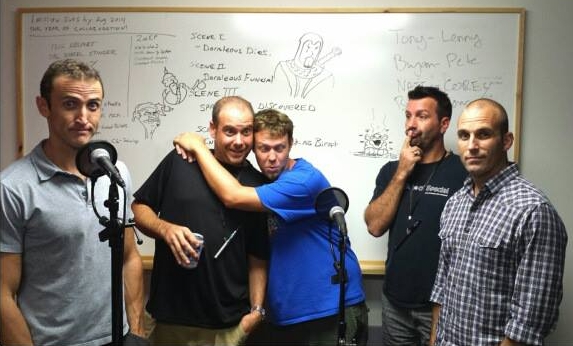
What’s the recording process for Doraleous?
We don’t have a script. We’ll come up with an outline for the episode, and bullet points that we want to cover. We put five microphones in a circle, and we role, and improvise. We make sure that we cover the bullet points. And the nice thing that happens is you get this sort of live development of an episode. So things may come out that you didn’t even expect, and we’re able to capture a lot of pretty good magic that we may not have captured with a scripted series. So after that, it goes to animation. And animation takes a ton of time. Brent Triplett and John Etheridge were the animators on Doraleous, and two people animating that show is a lot to do. Beyond that, the artwork, rigging characters — there’s a lot that goes into it. More so than Battlefield Friends. Because there we’re using the same characters, and we have a lot of the same backgrounds, and they’re shorter episodes. But Doraleous, we want to make sure that the production value is very high, and that we’re letting people experience other parts of the world. Because that’s how you do it right, in my opinion. You don’t stay in one place. You want to let the audiences imagination run wild of where we could go next.
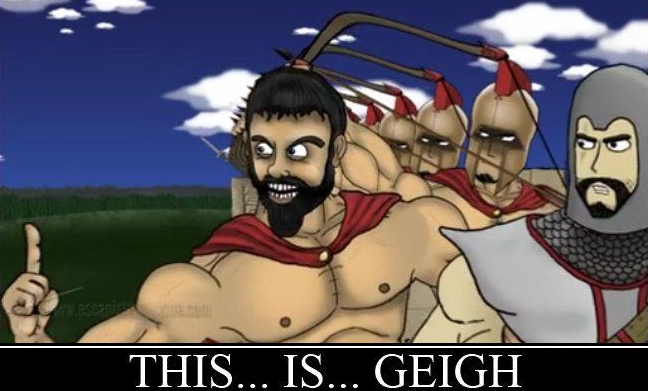
Where does Doraleous draw its references from?
What we try to do is hold up a mirror to the fantasy world, or anything that our fans can identify with, and say, “I remember that from this.” Obviously, parody is one of the oldest forms of comedy, and it works. It becomes very sharable, and something our fans can relate to. That is really important to us. I think the 300 episode, the “Geigh”  kingdom, as much as a childish joke as it is, is fantastic. The Lady of the Lake is probably my favorite character. And not too many people know this, but I actually play the Lady of the Lake.
kingdom, as much as a childish joke as it is, is fantastic. The Lady of the Lake is probably my favorite character. And not too many people know this, but I actually play the Lady of the Lake.
That goes back to holding up a mirror to old folklore, or to things that we remember from video games, or Dungeons & Dragons, or movies that we grew up with. Jon Etheridge is a little bit younger, but we all kind of grew up in the same time frame. We’re probably only five years apart in age between all of us. That being said, we have that common thread, and I think we find that common thread through our audience. We have these iconic moments that we draw from. Whether the movie did well or not, you may have a moment from the movie that everybody remembers. It’s like you remember this part of a movie, and maybe not the rest. But we all come up with a way to make fun of that. Whether it was something that everybody remembers from a trailer, or 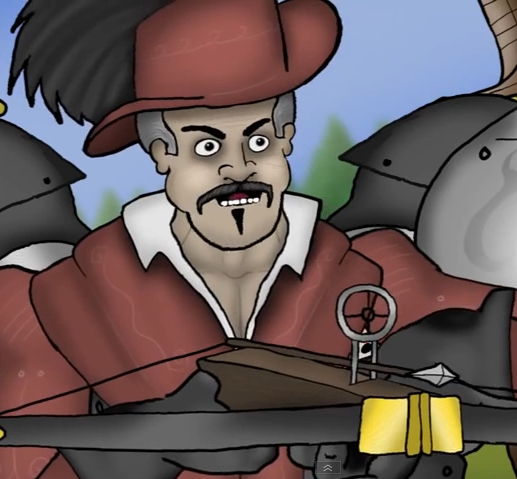 everybody remembers from a movie. It’s that one moment that we get to knock down a little bit. We had this kind of Sean Connery character. I think we drew him from The League of Extraordinary Gentlemen. And I was actually supposed to be a double in that movie for one of the actors. This is when I lived in Los Angeles. [Von Seannery] was the guy who, after Drak turned into a werewolf, was hunting Drak. That was probably the most obscure reference. But then we had very blatant characters that you’re definitely going to recognize, like from the “Geigh” kingdom, or from The Walking Dead episode. But the obscure stuff is fun too.
everybody remembers from a movie. It’s that one moment that we get to knock down a little bit. We had this kind of Sean Connery character. I think we drew him from The League of Extraordinary Gentlemen. And I was actually supposed to be a double in that movie for one of the actors. This is when I lived in Los Angeles. [Von Seannery] was the guy who, after Drak turned into a werewolf, was hunting Drak. That was probably the most obscure reference. But then we had very blatant characters that you’re definitely going to recognize, like from the “Geigh” kingdom, or from The Walking Dead episode. But the obscure stuff is fun too.
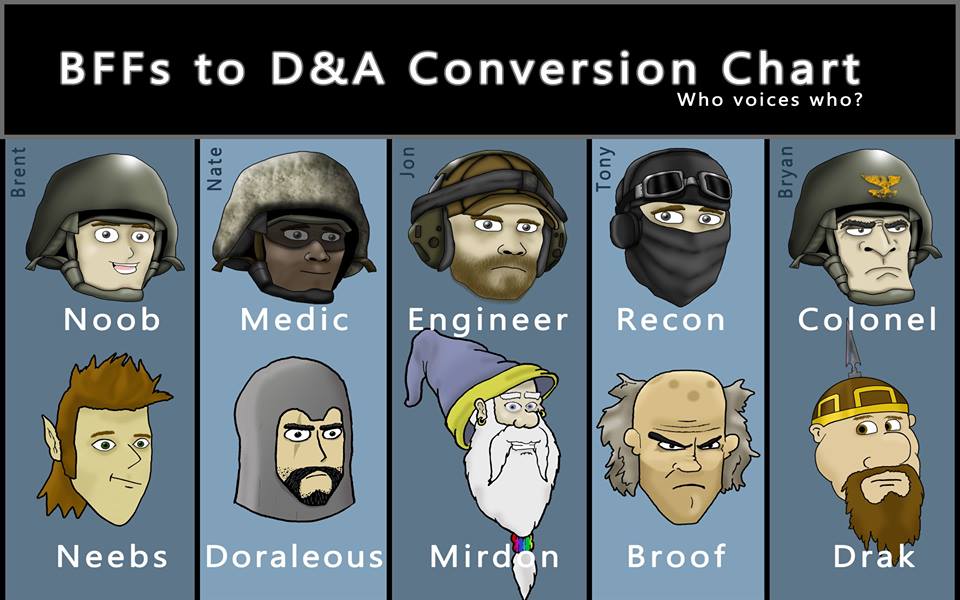
What’s your approach to Battleloggers and Battlefield Friends?
In Battleloggers, it’s just us playing video games. It’s a bit scripted, but more or less trolling. So we’re actually recording video game footage with our voices, and we’ve got these personalities who come through who bring more life to these games than what one may expect. This was a really easily developed show, and it seems to be working pretty good for us. Basically, it’s the process that probably every gamer has with his friends — where I talk my friends into playing a game with me online, and then we discuss the tropes of it, or these funny moments. 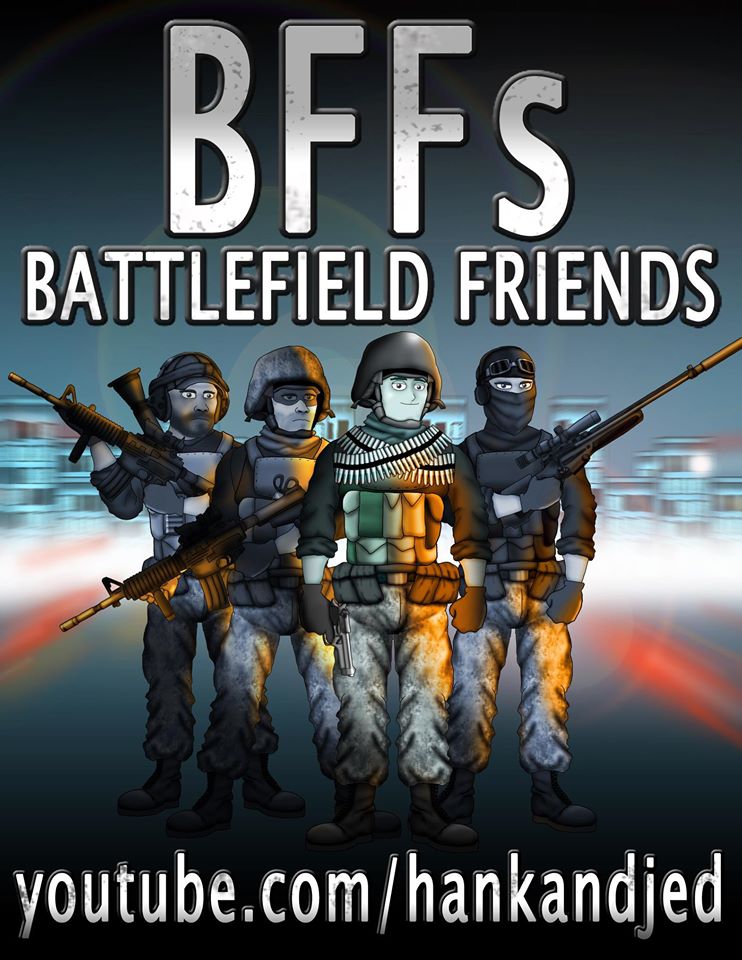
[For Battlefield Friends,] we just came up with the idea we should do some sort of animated series on this. So we did a pilot about a funny moment. Again, it’s throwing something at the wall, and seeing if it sticks. And we just kept coming up with more and more situations from this game that we were able to share with our audience, who have probably experienced the same thing we’ve been experiencing. So that model has worked tremendously for us. When we’re able to take an experience that we’ve had, and share it with others who’ve probably had that same experience, then they share it, and it’s just dominoes.
We really want to make sure that we stay within our community. We know our audience, and we know what they’re gonna like. I think you can alienate an audience by drifting away from that. So if we’re doing Battlefield Friends, which is 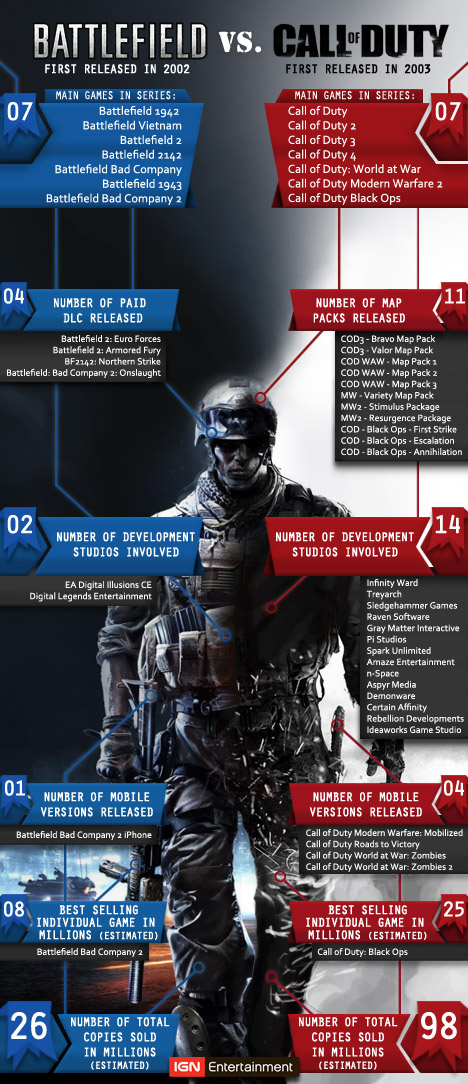 based off of Battlefield, we sort of stay within that. We may mention another game that’s within the same genre that might rival it, because one of the things that we realize is that our fans are on the Battlefield side. Then you have Call of Duty over here, and those two groups clash like crazy. So if we’re able to make a little jab at Call of Duty, our fans get wound up and love it. Then within the comments, you’ll see some Call of Duty folks chiming in, and it just leads to all-out warfare.
based off of Battlefield, we sort of stay within that. We may mention another game that’s within the same genre that might rival it, because one of the things that we realize is that our fans are on the Battlefield side. Then you have Call of Duty over here, and those two groups clash like crazy. So if we’re able to make a little jab at Call of Duty, our fans get wound up and love it. Then within the comments, you’ll see some Call of Duty folks chiming in, and it just leads to all-out warfare.
The first online game that I played, where I actually had interaction with another player, was Diablo. It was such an amazing experience at the time, because I just remember telling my friends, “I was playing with someone else who was not on the same console as me. They weren’t in the same room. They were God-knows-how-far away.” And you kind of let your imagination run wild from there of where is this gonna go next. Now it’s everyday life.
I’m pretty sure [my first squad-based shooter] was SOCOM, the Navy Seal game. Again, it was something that was sharable. You’d go back with a tremendous amount of energy, and tell your friends, “Holy cow, I was playing this game! You can squad up with people in other countries, but we should get on and play together!”
What’s your approach to world-building Battlefield Friends and Doraleous?
The world [of Battlefield] is built by the game developers. The more downloadable content that they come out with, the more that we have to grow as well — as far as the world we’re allowed to play in. So if they make the sandbox bigger, Battlefield Friends has a bigger sandbox to play in. Doraleous is infinite. We can do whatever we want.
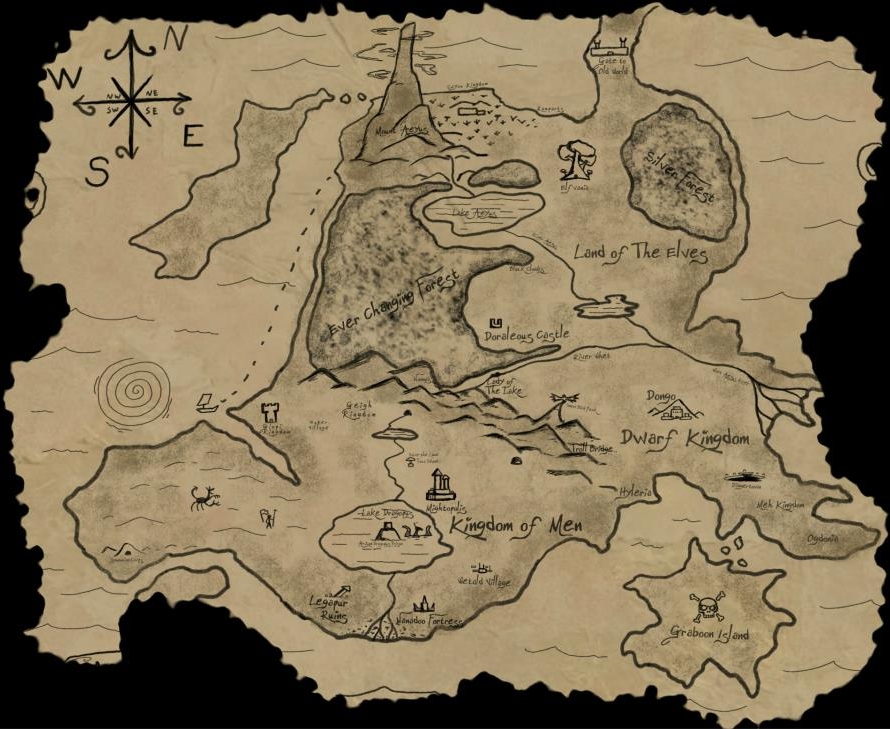
We actually have different worlds that we talk about that we never even touched on. It really stinks that we haven’t been able to show as much as we wanted to. But the show is so costly, that it can’t support itself on YouTube. As far as the Battlefield world, when the developers create more content, more places, our world expands.
Has Game of Thrones had any influence on Doraleous?
Actually, I think our animator John Etheridge is the only one that may watch that show. I know this is terrible, but I have never seen Game of Thrones. The other guys don’t really talk about it too much. So I don’t think that show has really influenced Doraleous at all, that I know of. I guess we would have to have a little person… well, Drak’s a little person… shit. But not like [Peter Dinklage].
Have any video game-inspired films made an impact on you?
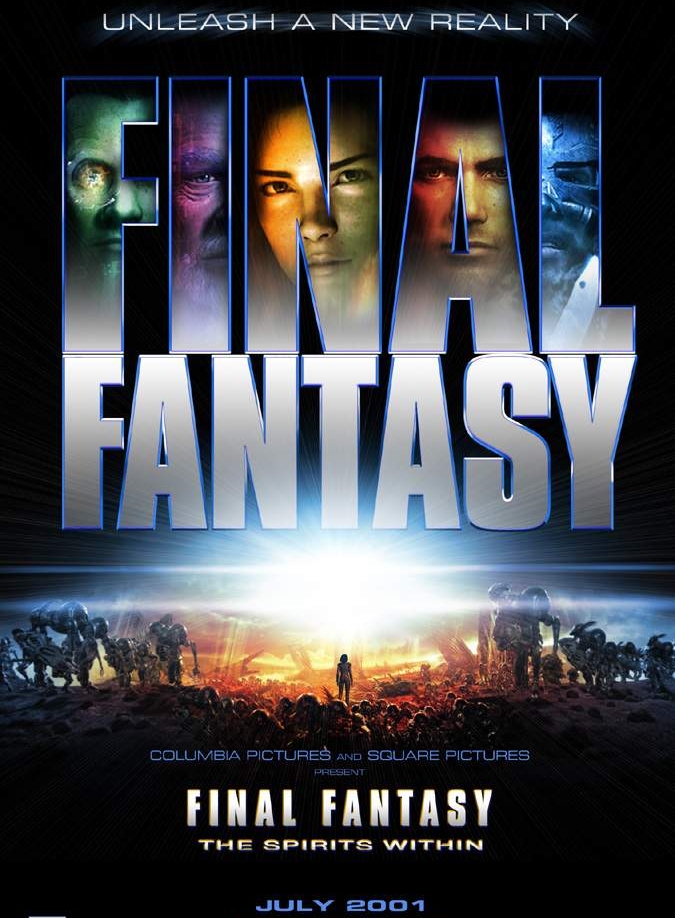 I don’t know if there’s anything out there that was derived from a game, and transitioned into a series or a movie, that has been so impactful that I’ll revere it forever. But I find it strange when that happens. Because I remember Final Fantasy being a video game, and then they turned it into a movie. I saw it, and it kind of fell flat. Sometimes when those transitions happen, I get very apprehensive to accept them, because you’re going from one world to another.
I don’t know if there’s anything out there that was derived from a game, and transitioned into a series or a movie, that has been so impactful that I’ll revere it forever. But I find it strange when that happens. Because I remember Final Fantasy being a video game, and then they turned it into a movie. I saw it, and it kind of fell flat. Sometimes when those transitions happen, I get very apprehensive to accept them, because you’re going from one world to another.
We’re kind of anti-Hollywood. Like Transformers — it looks pretty, but the stories fall flat. There was a video game back in the day called Virtua Fighter, and then they made it into an animated series. I was the English dub voice of Akira, and did 26 episodes of that. I thought it would be more accepted. But when I saw the final product, I said, “Yeah, this is great, but I’m not sure the transition is so impactful, that the people who play the game are just gonna love the series.”
As far as sword and fantasy movies, it was so cool at the time: Krull. Looking back on it now, I watch the trailer, and I’m like, “Oh, wow. This is… interesting.” Like a student film. But at the time, I just thought it was such an amazing world, with all these things that I used to draw from Dungeons & Dragons. I was like, “OK, yeah, they got it.”